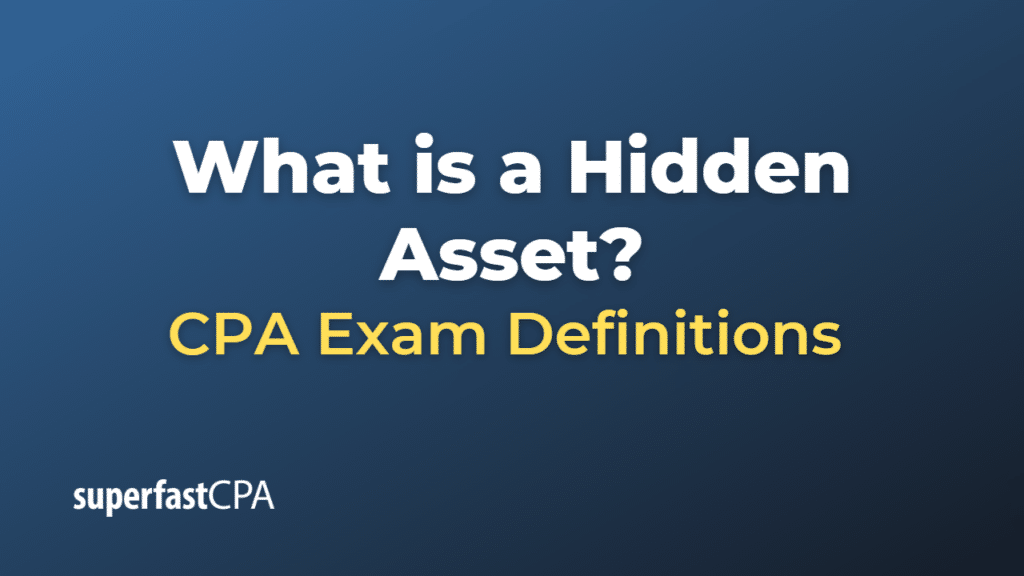Hidden Asset
A hidden asset refers to an item of value that isn’t visible or is significantly undervalued on a company’s balance sheet. These assets aren’t necessarily hidden on purpose; it could simply be due to the method of accounting or valuation that has been applied, which underestimates the true or potential value of the asset.
There are several types of hidden assets, including:
- Real Estate: A company might own property that has appreciated in value significantly but is still recorded on the balance sheet at its historical cost, minus depreciation. The market value of such properties could be much higher than the value stated in the balance sheet.
- Intellectual Property: This includes patents, trademarks, copyrights, and brand recognition. These can be significantly undervalued or not included at all on the balance sheet, yet they may contribute a substantial portion of a company’s earnings and growth.
- Investments in Subsidiaries or Affiliates: Sometimes, the value of investments in subsidiaries or affiliated companies is not fully reflected on the parent company’s balance sheet.
- Unused Resources: These can include anything from unused space that could be rented out to surplus manufacturing capacity or raw materials.
- Human Capital: While not recorded on the balance sheet, the skills and knowledge of a company’s workforce can be a significant asset.
Identifying hidden assets requires a deep understanding of a company’s operations and financial statements, as well as the ability to analyze its value from different perspectives. This is often a key part of what investment analysts, particularly value investors, do when assessing a company’s worth.
Example of a Hidden Asset
Company XYZ operates a national chain of retail stores. It owns a significant amount of property, including its store locations and its corporate headquarters. All of this real estate was purchased several decades ago and is carried on the company’s balance sheet at its historical cost, minus depreciation.
Recently, the area around the corporate headquarters has become a popular commercial district, causing property values to skyrocket. However, the appreciated value of the headquarters’ property is not reflected on the company’s balance sheet since it is recorded at historical cost minus accumulated depreciation, according to generally accepted accounting principles (GAAP).
In this case, the headquarters’ property is a “hidden asset.” Its market value is significantly higher than the value represented on the balance sheet. A keen investor conducting an analysis might realize this and consider the company to be undervalued if the current stock price doesn’t reflect the increased real estate value.
This is just one example. Hidden assets can take many forms and can significantly affect a company’s perceived value, especially in situations where they are substantial or numerous.













